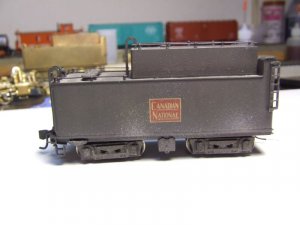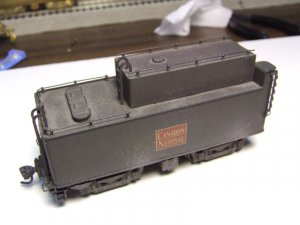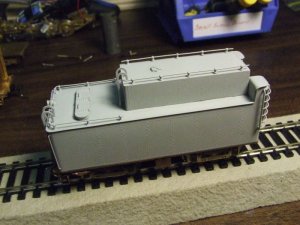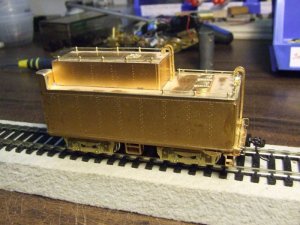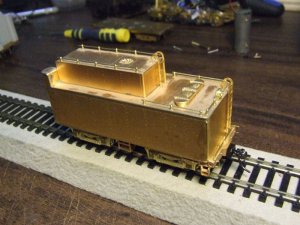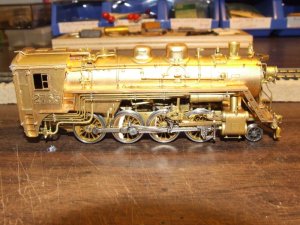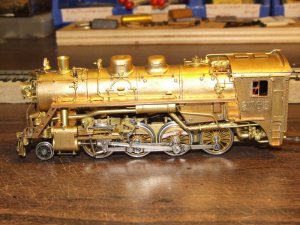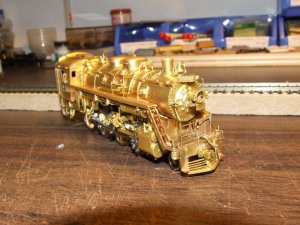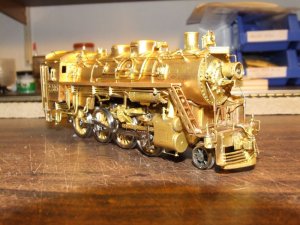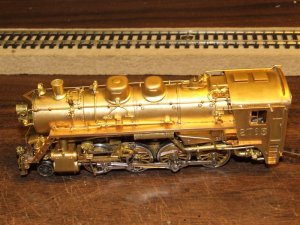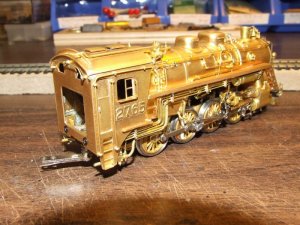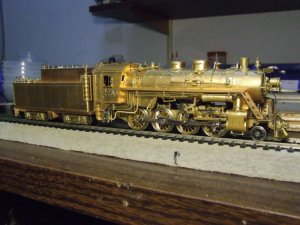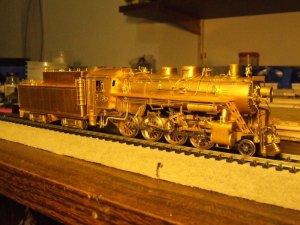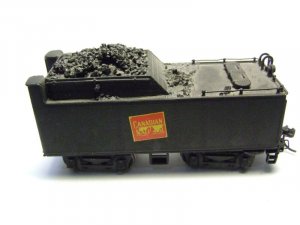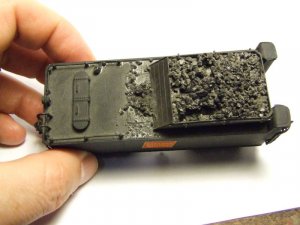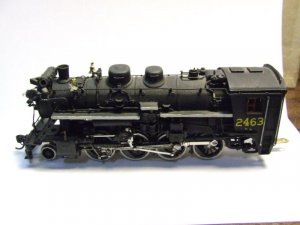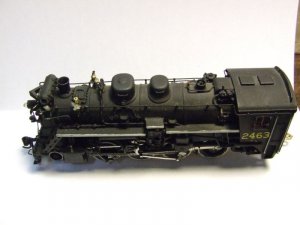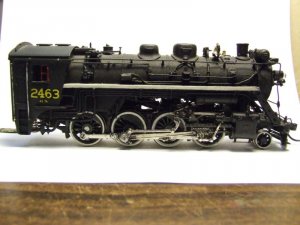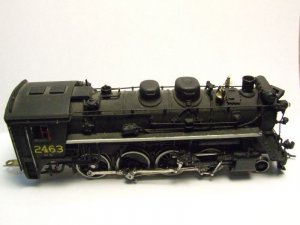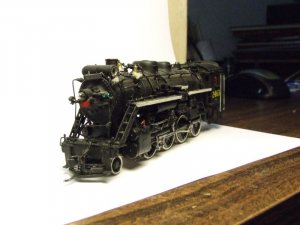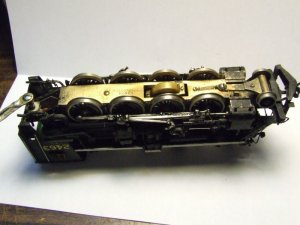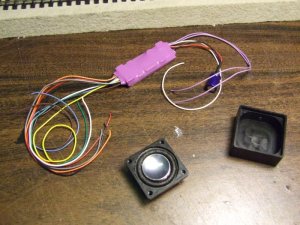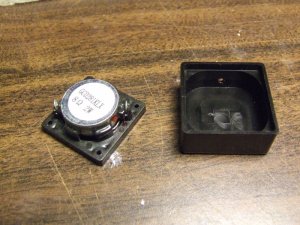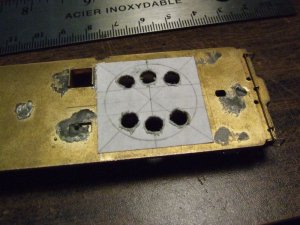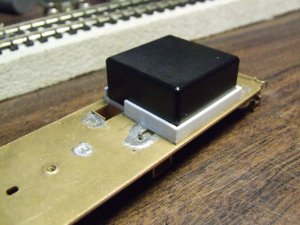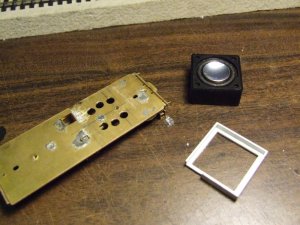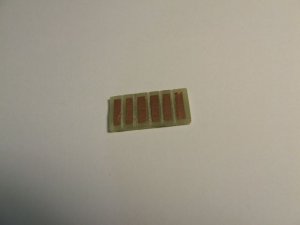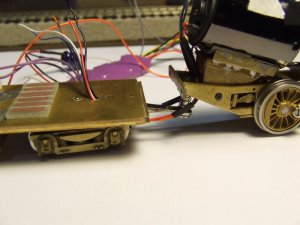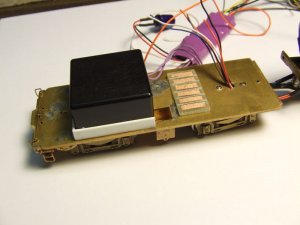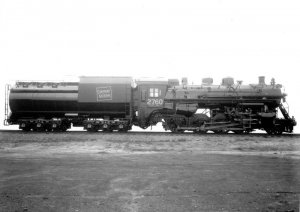
While looking at some old photos I found this one. It is a builders shot of #2760. All nice and shiny new with the vanderbilt tender built for it. The vanderbilt tender is nice but it does look a little to big behind a 2-8-0.
Now for some pictures of the reassembled drive for my N-5-d.
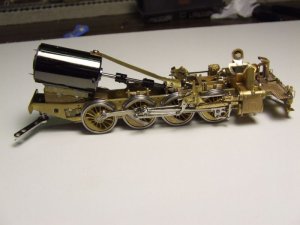
Here is a right side view of the assembled drive. The new drivers and springs, the new gearbox with new drive shaft couplers, a torque arm, modified motor mount and the can motor.
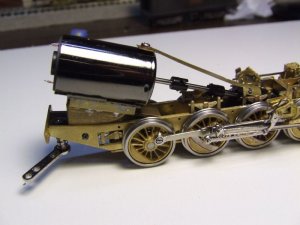
A close up view of the new can motor and the motor mount. I ended up using a different motor. This one had a single shaft and is 2mm longer than the other one. The motor is being held in place by some double sided foam tape. Same stuff used to mount after market plastic body panels on cars. Very strong stuff.
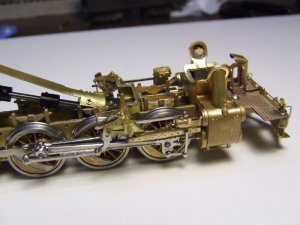
The valve gear has been cleaned up and remounted for test running.
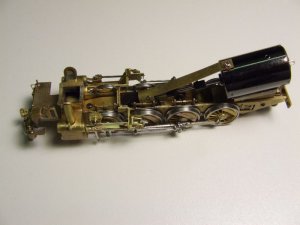
A top view of the reassembled drive showing the torque arm. Seeing as the gearbox floats on the axle of the geared driver it is needed to stop the gearbox from flopping forwards and backwards. I made it from some 0.015" brass sheet. The end at the gearbox was formed to match the top of the gearbox. The gearbox has two holes drilled and tapped for 1.4mm screws. They hold the torque arm on the gearbox. The torque arm is attached to the motor with a 2mm shouldered screw. This allows the geared driver some side to side movement for curves.
The assembled drive was wired for DC power and test ran with the rebuilt tender after the above photos were taken. The good news is it ran good but did have some issues with the side rod clearances and some small rubs and binds. A few thin thrust washers, some careful bending and a little filling took care of the problems. It now runs very well and is very quiet. I have a couple of Proto 2000 Heritage 0-8-0s in CN markings and it runs just about as well as they do. The low speed is nice and it will crawl along slow enough it takes about 30 seconds to cover three feet. The gearbox is new so hopefully with some running the slow speed will get slower yet.
Next was a test run with a DCC decoder. I rewired the drive for a Digitrax DH163 decoder. The preformance was the same except for the slow speed. The decoder has adjustments to help slow speed control and they made a difference. It will now creep along slow enough that a three foot stretch takes under a minute. I must say I am very pleased with the results. Seeing as it was a well run locomotive that was not taken care of I expected a bit of a struggle when it came to getting it to run smoothly and slow.
Next posting will be some pictures of the drive with the boiler remounted. I just need to download them off my camera and resize them.
Wayne R


